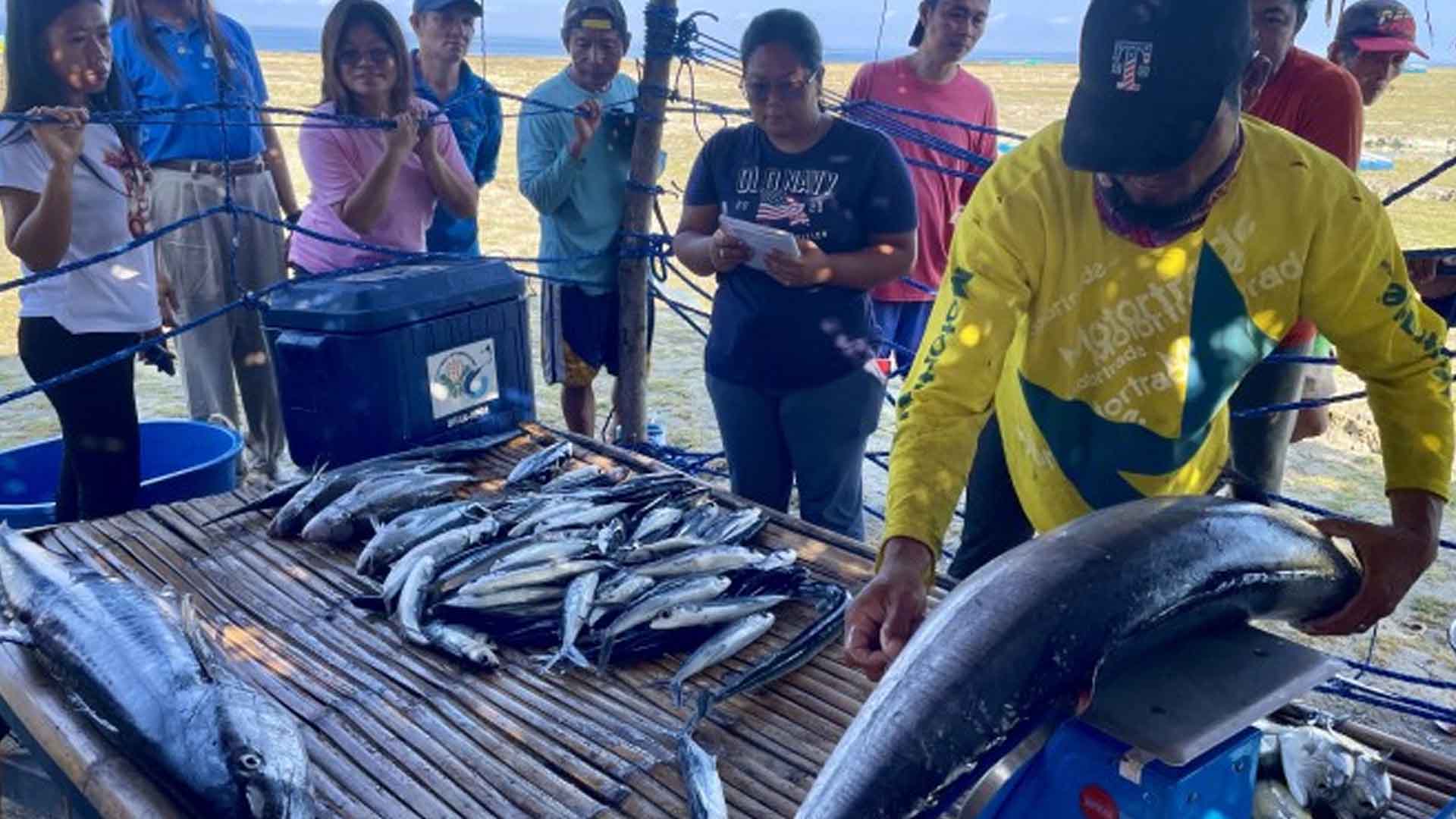Small-scale fisherfolk from Barangay Dilavo in Pasuquin, Ilocos Norte have stopped braving the open seas to be able to feed their families.
Thanks to the Bureau of Fisheries and Aquatic Resources (BFAR), they are reaping the benefits of the “lambaklad” project.
Coined from the Filipino words “lambat” (net) and “baklad” (corral), the Japanese-inspired technology uses nets and ropes, instead of bamboo poles, laid down about 200 meters from the shore.
It is a sustainable system because, among others, the holes of the nets allow small fish to easily escape.
It is likewise environment-friendly because fishers use non-motorized flat boats and paddle to go to where the nets are. Fuel-powered boats are only for hauling the nets twice a day.
Joel Queddeng, Dilavo Fishermen Association president, told the Philippine News Agency that they save on fuel with the use of the flat boat, which also encourages shoal of fish to go near the shores.
“Lambaklad made our fishing activities more fun and economical because we just haul the big fishes from the mouth of the lambaklad project,” James Castillo, a fisherman for 15 years now, added in a recent interview.
Castillo said there are times when endangered species, like sea turtles, get trapped but they make it a point to release them.
Vanessa Dagdagan, senior aquaculturist of BFAR-Ilocos Norte, said that since the lambaklad project started in 2023, tons of high-value fish like tuna, scads, moonfish and other pelagic species have been hauled, giving a steady source of income to the fishing community.
“It uses a stationary huge fish trap laid down under the sea. It is inspired by a Japanese fishing technology adopted in the Philippines that catches fish through a process of non-harmful allurement,” she said.
Since March 19, the association has harvested a total of 3,115 kilos, with the highest daily catch at 610 kilos and lowest at 22 kilos.
Arthur Valente, fishery regulatory officer of Ilocos Norte, said the lambaklad technology diversified target species like barracuda, mackerel, and tuna, among others.
“The structure guides the fish to swim towards the net and ends up in a bag where the fishermen will just haul them. This type of fishing method is a lot safer and cheaper for them as they no longer have to go far,” he said.
After deducting the expenses, the association uses a 60-30-10 sharing scheme on the net income, with the biggest share going to the members, 30 percent as savings and expansion budget, and 10 percent as maintenance budget.
To further improve the operation of the project, the association is seeking help for the construction of a boat slide so that they will no longer use a makeshift boat slide whenever they harvest from the lambaklad.
To complement the eco-friendly fish trap technology, the association is also considering a solar salt project with the help of technical experts from BFAR to grow their income. (PNA)









